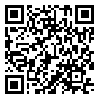Volume 2, Issue 4 (3-2015)
JRIA 2015, 2(4): 16-31 |
Back to browse issues page
Download citation:
BibTeX | RIS | EndNote | Medlars | ProCite | Reference Manager | RefWorks
Send citation to:



BibTeX | RIS | EndNote | Medlars | ProCite | Reference Manager | RefWorks
Send citation to:
(2015). Tuba concept’s role in formation of illustrious Safavid domes. JRIA. 2(4), 16-31.
URL: http://jria.iust.ac.ir/article-1-108-en.html
URL: http://jria.iust.ac.ir/article-1-108-en.html
Abstract: (13751 Views)
Covering one of the most important spaces, domes have a magnificent role in Persian mosques. During continuous eras of Islamic architecture masons could promote this techno-spiritual heritage and developed its spatial value. This process reached its apogee in Safavid era. Overshadowing Shia conceptual system carved the cultural context of Safavid society and consequently changed its architectural features. In this context, Safavid illustrious domes acquired modern roles and were dressed differently.
In previous studies symbolic meanings of domes have been analyzed mostly in two major groups of “positivist-narrative” and “mystical-hermeneutic” approaches. The followers of traditionalism school by applying mystical-hermeneutic approach have suggested some general meanings for most of dome cases in the entire Islamic world. Manifestation of symbolic meanings such as heaven, paradise, sky and unity is proposed by these scholars. On the other hand, positivist art and architectural historians by utilizing a narrative approach has criticized the traditionalism school. They believe tying any meaning to a traditional architectural element requires achieving clear historical evidences that could be gathered through field studies. Meanwhile there are limited group of scholars that benefit from both hermeneutic and narrative methods. Although they accept the central concept of embodiment of Islamic meanings in the buildings, they provide historical subjective evidences for their arguments.
This paper aims to investigate the meaning of Safavid domes by using “Narrative - Hermeneutic” approach. Appropriately, the hypothesis of embodiment of the meaning of a holy tree, called Tuba in Safavid illustrious domes is examined by means of two questions. The first question looks for the original meaning of Tuba in Safavid cultural context which has been studied in a separate paper. That paper indicates that the term Tuba is only mentioned once in the Quran, However its attributes can be ascertained from various hadiths and other relevant references. Additionally, in his The Red Intellect, Sohrevardi describes this tree. Accordingly, Tuba is a divine, tall, with a long shadow tree that is one of the blessings in heaven. The second question is concerned about Tuba’s probable relationships to illustrious Safavid domes. Consequently, to find out the answer characteristics of the two main domes in Madrese Chāhār-bāgh (Soltānī school) and Masjid-i Jamī Abbāsī (Shāh mosque) at Isfahan are analyzed in three spatial scales including the city, the building and the dome chamber. Accordingly, images of the domes in city sky line, dome’s silhouette and shape, outer and inner ornaments as well as the content of dome’s inscriptions are studied.
In the urban scale, western traveler’s description as well as studying the city sky line represents a modern picture that forms in the Safavid capital. The picture that displays raised huge domes in the verdure background of the Isfahan as a garden city. In an architectural scale, the projected shape of the dome constructed on a tall drum represents the form of an abstract tree that dominates the mosque and the school and their surrounding area. This image can be better realized by looking to the decorative layer of two domes. Both cases are covered by lavish vegetal decorative patterns drawn on a turquoise background that encompasses the outer and inner shell of the dome. This layer dresses the abstract shape of domes and illustrates an objective tree free standing beyond the city skyline.
Moreover, studying the buildings inscriptions may reflect the indicated concepts and intention of their builders and providers. Acordingly inscriptions of main spaces including the entrance (pishtaq), the foyer (hashti), Qibla ivan and minarets were survived. Almost all the inscriptions in both monuments reflect the three main concepts. Inscriptions in both monuments reflect the scientific superiority and spiritual grandeur of Imam Ali. Simultaneously in Madrese Chāhār-bāgh the value of knowledge and in Masjid-i Jamī Abbāsī the importance of congregational mosque are mentioned in different ways. More precisely investigation of dome chamber inscriptions reflects some indicated concepts. Unlikely to the most of dome chambers the applied inscriptions in both cases hardly contain Quranic verses. They mostly include those hadiths and quotes that clarify the role of Imam Ali as the first Imam and also successor and brother of the prophet. More importantly, the mihrab inscription at Madrese Chāhār-bāgh, as the focal element for meaning manifestation in dome chamber, represents the night journey and the ascension of Prophet Muhammad and describes his meeting with the holy tree of Tuba.
Finally, qualitative analysis (comparing and content analysis) of the findings evaluated the paper’s hypothesis in three criteria of “logical consistency”, “truthfulness probability” and “completeness”. In the first criterion, the paper indicates on the logical consistency of this hypothesis. Paper findings in the second criterion demonstrate the truthfulness probability for embodiment of the meaning of Tuba. Eventually the last criterion suggests that provided evidences cannot support the completeness of the hypothesis. All in all, this paper suggests that core concept of Tuba tree as the most truthful explanation for the meaning of studies domes.
Keywords: Dome, Masjid-i Jamī Abbāsī, Madrese Chāhār-bāgh, Safavid Mosques, Holy Tree of tuba, Shia Mosques, Islamic architecture.
Type of Study: Research |
Subject:
General
Received: 2015/05/27 | Accepted: 2015/05/27 | Published: 2015/05/27
Received: 2015/05/27 | Accepted: 2015/05/27 | Published: 2015/05/27
| Rights and permissions | |
 |
This work is licensed under a Creative Commons Attribution-NonCommercial 4.0 International License. |




